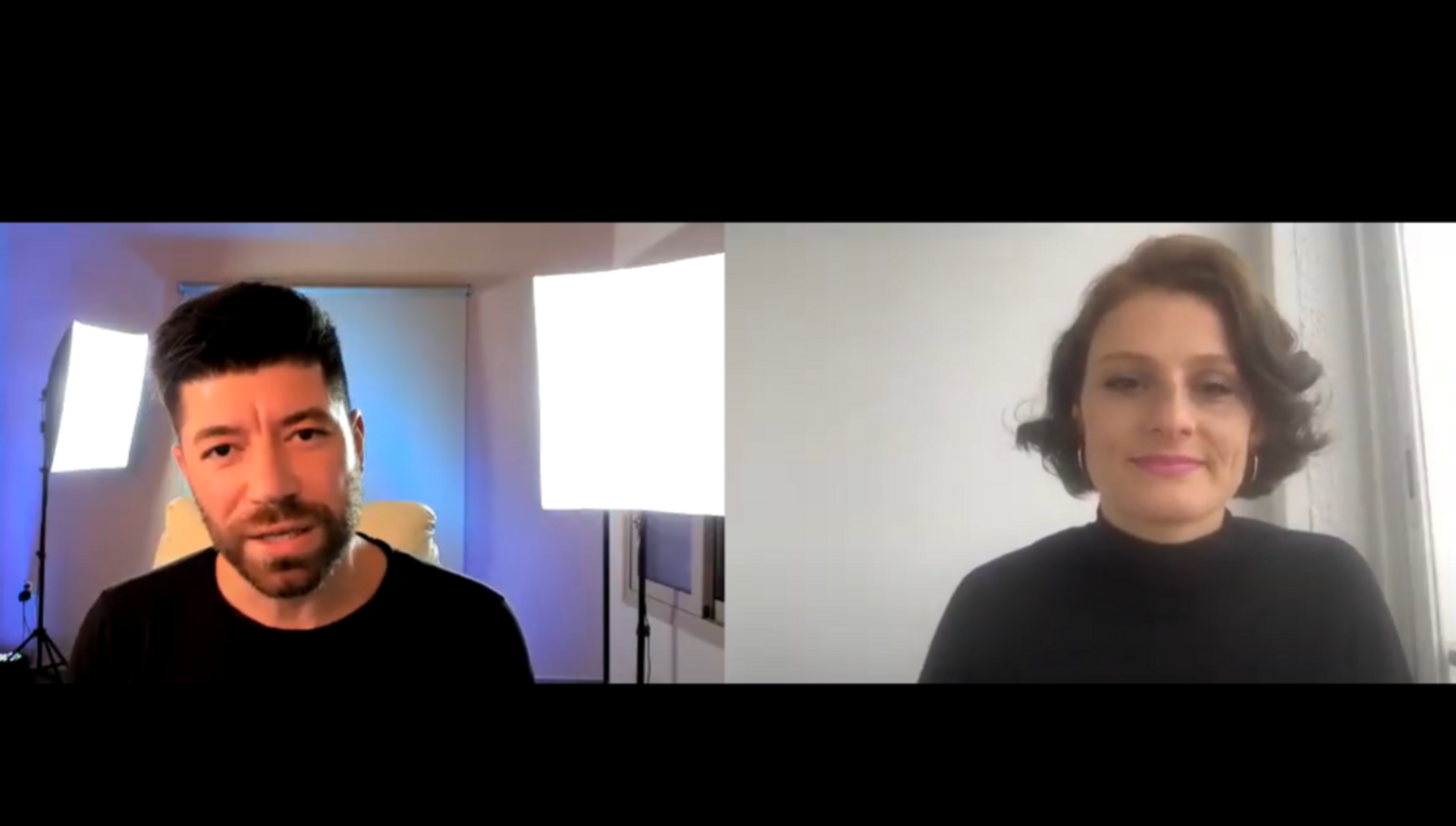Architect and business strategist Sara Kolata shares her professional journey and reveals what sparked her mission to improve architects' financial well-being.
Taking the leap into entrepreneurship or freelance work and the idea of being your own boss is attracting many architects to start a new professional chapter in their lives — and Sara Kolata’s goal is to get you there in no time. Through online training, events, and research, she is committed to educating architects on turning freelancing into their own profitable businesses.

In the third episode of Chaos Campus Live, Sara Kolata joins our host Nikos Nikolopoulos to shed some light on what it takes to start your own business as an architect and the challenges you may meet along the way.
Make sure you join the Chaos Campus online community to watch the entire show, as well as learn from and engage with inspiring artists in the archviz and VFX industries!
Tell us what led to your experience in Guatemala.
I think my internship in China really hit me because being an architect, you kind of want to change the world. At the same time, working every day in the office, I saw all these poor people out on the street, and I was always wondering, what do we do for them? I was reminded that a lot of times big corporations buy land and we just misplace those people.
I became more and more interested in the humanitarian aspects of architecture. And I thought, why not take it in my own hands? I wanted to get the full-blown experience. I felt brave enough to do it, and told myself at least I'll get a go at building everything. Also with humanitarian architecture generally the volume of projects is higher.
Sara Kolata, Architect and Business Developer
So that led me to start my own architectural practice. It was called Tribe Lab. I ended up going to third-world countries to look for projects. And soon enough I found a project, then found a sponsor to pay for these projects, which were either bigger charities, or in the case of Guatemala, people that were already investing in developing places like that.
Did you meet any challenges along the way?
In the beginning I was flying on it, because next thing you know, I'm super young and running this practice. I'm coming to the office and people are showing me their work, and I'm commenting rather than drawing the plans. I would just say, change this and do this and now it’s great. But, soon after, reality hit.
And the reality was having to manage the whole operation and paying people salaries, understanding how expensive it is to recruit. And, in fact, after office expenses, and having to invest in this and that, paying rent and payouts for employees, I wasn't making any profit.
At first, I thought that's normal. But then this catch-22 happened to me again. I had mentors that I was looking up to, but they were not wealthy, or they would still seek permission to go forward with their work. I could see that they were struggling.
At that moment, I thought, this is another kind of lack of vision. I felt that I had created something that didn't have a ceiling. I think this is really the part of my story that led me to what I'm doing now.
Sara Kolata, Architect and Business Developer
Is that the period of time you took to further your education?
At that pinnacle moment, I realized that I do have it in me to be an entrepreneur, and even the sheer idea of starting something on my own, so young, proved that. So I thought if I actually educate myself in business, I will create a better future for myself.
At the time, I was struggling financially and I couldn't manage both running the projects and paying for an education. So I wrapped up the projects, I left some of them to be completed by other architects, and then just flew to America to educate myself in business. And that's where that new path started. Today I'm proud to be an advocate for Business of Architecture.
Which was the most memorable project that you have come across that inspired you?
I really like the work of Francis Kéré. I'm interested in bamboo building, so Simón Vélez is an architect I follow and I love his structures. What touches me is when you can see that the materials are extracted from nature, and that people found new uses for them.
What is the key to success in the industry? Being creative, artistic, or being business savvy?
Being business savvy. I'm sure you've seen people whose work you don’t like, but they're succeeding and selling. They know how to sell their work. I think if you want to measure success, and of course, it depends what it means to you. If success is to build smaller projects with little profit, but you've done it with heart and your client is happy, then go ahead and commit to creativity.
If you want to do architecture on a bigger scale, and provide more value to people, you have to elevate that game by knowing how to scale up and sell yourself, basically. And then that's when the business side comes in.
Sara Kolata, Architect and Business Developer
What are your thoughts on VR in the industry?
It's fascinating to me. I actually think that it leads to a better way of presenting projects, and probably saves time and money. Recently, I’ve discovered architecture firms that use VR technology to better communicate their designs for their own clients by basically inviting the client into the office, putting on the VR set on them, and showing them the building where they could actually discuss different elements that they would like to change on the spot.
VR is giving a whole new experience to the client, but it's also elevating the game from spreading plans on the table to something more engaging and powerful.
Sara Kolata, Architect and Business Developer
What are your current goals?
I am in love with the whole process of creating events. With the Disrupt symposium, I found myself not only elevating my name to a place where I actually kind of want it to be, but also, I ended up just networking with people like the team from Chaos, for example. And people that are in decision-making positions within big practices that I could learn from…
I'm not sure if everyone is aware, but a big part of my business is actually helping architecture firms with business strategy and sorting their finances. I don't work alone on that mission. I have a team of partners that have been providing these services for 35 years. Now we're just doing it on a large scale by bringing new audiences to the services, which continues to be a big passion of mine.





